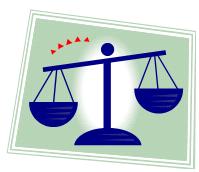Alternatives legal services charges
Law firms look for alternatives to the billable hour
 A transformation is underway in the polished hallways and corner offices of Washington's venerable legal industry.
A transformation is underway in the polished hallways and corner offices of Washington's venerable legal industry.
Law firms, like many businesses trying to regain their footing after the recession, are rewriting one of the most basic components of the business model they've clung to for decades — the way they charge companies for legal services.
Firms are moving away from traditional hourly billing to what's known as alternative fee arrangements largely because their biggest clients — corporations — have been pulling back.
Businesses are relying less on law firms and assigning more work to their own company lawyers, according to a recent study of nearly 6,000 in-house attorneys in the United States and abroad by the Washington-based Association of Corporate Counsel.
While top law firms will always have a place at the table for bread-and-butter specialties like litigation and acquisitions expertise, the survey indicates that firms' stronghold is eroding even in those key areas. The percentage of in-house lawyers who used outside law firms for work on taxes, mergers and acquisitions, intellectual property and litigation are all down compared with five years ago.
The shift is "a reaction to the significant increases in billing rates over the last 10 years," said Edward Ryan, executive vice president and general counsel at Marriott International, which began a concerted effort to "insource" more legal work several years ago.
The hospitality giant recently boosted its 70-attorney legal department by hiring two litigators from one of the company's outside law firms — a response to ever-larger hourly rates.
"You started seeing the $1,000-an-hour lawyer," Ryan said. "You can easily get the same quality of work inside, and legal expenses won't be quite so high."
Alternative fees include any billing arrangements that are not hourly, such as flat fees, contingency fees and what are known as "collars," where lawyers and clients agree on a flat amount, and lawyers will offer a discount on the difference if they exceed the agreed-upon number.
"Law firms are seeing business dry up. That's why they're more willing to provide alternative billing," said Michael Wu, general counsel of the Arlington language learning software company Rosetta Stone, who last year hired an intellectual property litigator to keep more trademark work in-house. "I think this trend will continue, given the hourly billing structure and how expensive it is for companies" to hire outside firms.
Law firms, for their part, seem to be getting the message. In a recent survey of the 200 biggest firms in the United States by the legal trade journal the American Lawyer, 92 percent of firm leaders said they used flat fees for at least one entire matter in 2011, and 82 percent used collars.
"Law firms need to be much more nimble about competing for the business that is out there," said Robert Lipstein, a partner at Crowell & Moring who chairs the firm's finance and contingent fee review committees. "Part of that nimbleness is being attuned to how clients want the work priced."
Crowell was one of the early adopters of alternative fees, and about 40 percent of the firm's work was billed that way in 2011. That percentage has grown rapidly over the last five years and will continue to expand, Lipstein said.
"Some firms will do [alternative fee arrangements] reluctantly, kicking and screaming but recognizing they have to," he said. "There are firms that won't do it at all, and God bless them if they can get away with that in this environment. Any law firm leader today who thinks they can do 100 percent of work on billable hours forever into the future is not going to have a law firm for very long."
(Published by The Washington Post - April 15, 2012)